Race to the Bottom
Chicago Studies in American Politics
A series edited by Susan Herbst, Lawrence R. Jacobs, Adam J. Berinsky, and Frances Lee; Benjamin I. Page, editor emeritus
Also in the series:
Americas Inequality Trap: How Economic Inequality Feeds on Itself and Why It Matters
By Nathan J. Kelly
Good Enough for Government Work: The Public Reputation Crisis in America (And What We Can Do to Fix It)
by Amy E. Lerman
Who Wants to Run?: How the Devaluing of Political Office Drives Polarization
by Andrew B. Hall
From Politics to the Pews: How Partisanship and the Political Environment Shape Religious Identity
by Michele F. Margolis
The Increasingly United States: How and Why American Political Behavior Nationalized
by Daniel J. Hopkins
Legacies of Losing in American Politics
by Jeffrey K. Tulis and Nicole Mellon
Legislative Style
by William Bernhard and Tracy Sulkin
Why Parties Matter: Political Competition and Democracy in the American South
by John H. Aldrich and John D. Griffin
Neither Liberal nor Conservative: Ideological Innocence in the American Public
by Donald R. Kinder and Nathan P. Kalmo
Strategic Party Government: Why Winning Trumps Ideology
by Gregory Koger and Matthew J. Lebo
Post-Racial or Most-Racial?: Race and Politics in the Obama Era
by Michael Tesler
The Politics of Resentment: Rural Consciousness in Wisconsin and the Rise of Scott Walker
by Katherine J. Cramer
Race to the Bottom
How Racial Appeals Work in American Politics
LAFLEUR STEPHENS-DOUGAN
The University of Chicago Press
CHICAGO & LONDON
The University of Chicago Press, Chicago 60637 The University of Chicago Press, Ltd., London
2020 by The University of Chicago
All rights reserved. No part of this book may be used or reproduced in any manner whatsoever without written permission, except in the case of brief quotations in critical articles and reviews. For more information, contact the University of Chicago Press, 1427 E. 60th St., Chicago, IL 60637.
Published 2020
Printed in the United States of America
29 28 27 26 25 24 23 22 21 20 1 2 3 4 5
ISBN -13: 978-0-226-69884-7 (cloth)
ISBN -13: 978-0-226-69898-4 (paper)
ISBN -13: 978-0-226-69903-5 (e-book)
DOI : https://doi.org/10.7208/chicago/9780226699035.001.0001
Library of Congress Cataloging-in-Publication Data
Names: Stephens-Dougan, LaFleur, author.
Title: Race to the bottom : how racial appeals work in American politics / LaFleur Stephens-Dougan.
Other titles: Chicago studies in American politics.
Description: Chicago : University of Chicago Press, 2020. | Series: Chicago studies in American politics | Includes bibliographical references and index.
Identifiers: LCCN 2019044986 | ISBN 9780226698847 (cloth) | ISBN 9780226698984 (paperback) | ISBN 9780226699035 (ebook)
Subjects: LCSH : Stereotypes (Social psychology)United States. | Race discriminationUnited States. | African AmericansRace identity.
Classification: LCC HM 1096 .S738 2020 | DDC 305.800973dc23
LC record available at https://lccn.loc.gov/2019044986

This paper meets the requirements of ANSI/NISO Z 39.48-1992 (Permanence of Paper).
Contents
Introduction
On April 27, 2015, West Baltimore, Maryland, erupted in unrest. The uprisings were in response to the death of Freddie Gray, an African American civilian who died while in police custody under suspicious circumstances. It was not the first time that the nation would be forced to confront the crisis of policing in black and brown communities, and it likely would not be the last. Once again, a familiar scene unfolded on television screens across the nationblack youth clashing with police amidst billowing smoke and flames, placing a national spotlight on race, justice, police brutality, and the distrust between African American communities and their local governments. As was typical of the fallout around other tense racial incidents, the nation was looking to the first black president to address the racial tension. How would he respond?
When racial fissures were previously exposed during his tenure, Obama made an effort to appear tempered and even-handed. On the one hand, he would acknowledge and appear sympathetic to African American grievance, largely through symbolic gestures, such as famously saying, You know, if I had a son, hed look like Trayvon, The resulting fallout was usually that Obama was criticized in conservative circles for being anti-police, while he faced criticism in liberal circles for being far too silent on an issue that disproportionately affected African Americans.
The day after the unrest began in Baltimore, Obama initially avoided commenting on what was happening only forty miles away from the White House. Eventually, he made a fourteen-minute prepared statement during a press conference with Prime Minister Shinzo Abe of Japan. Similar to his response in previous incidents, President Obama reminded the public that the police have a tough job. Obama, however, also condemned the criminals and thugs who tore up the place.
Obama, however, was not alone in his use of racially charged language. Obamas word choice was similar to that of his fellow Democrat Stephanie Rawlings-Blake, the African American mayor of Baltimore, who said, Too many people have spent generations building up this city for it to be destroyed by thugs, who in a very senseless way, are trying to tear down what so many have fought for. All three politicians were united in their use of racially inflammatory language, referring to the protestors as thugs in separate statementsthis, despite the diversity of their racial and political backgrounds, and political constituencies.
The word choice drew criticism and scrutiny from some black lawmakers, including Baltimore city councilman Carl Stokes, who suggested that thug was racially chargeda euphemism for the N-word. President Obama, however doubled down on his use of the term, communicating through White House spokesman Josh Earnest that he did not regret using the term (Earnest 2015). Obama, however, was responsible to a national electorate that was predominantly white (Krogstad 2016). Rawlings-Blake had an urban electorate that was overwhelmingly African American (Yeip 2015), which might explain why Rawlings-Blake chose to back down from her statement, while Obama doubled down on the use of the term.
Using the word had political utility, communicating to Americans that these elected officials were taking a no-nonsense approach to crime that was being perpetrated by mostly black youth. Hogan was reinforcing his partys reputation for being tough on crime, while Obama and Rawlings-Blake were distancing themselves from their partys reputation for being soft on crime. Obama and Rawlings-Blake were also eschewing any presumed racial allegiance with the protestors, who were overwhelmingly African American. This is just one of many examples of how politicians across the racial and political spectrum engage in a political strategy that I refer to as racial distancing, often in surprisingly similar ways.
Racial distancing is the phenomenon whereby politicians convey to racially moderate and racially conservative whites that they will not disrupt the racial status quo. By racial status quo I am referring to the existing state of affairs that is characterized by racial inequality, with whites at the top of the hierarchy, including white dominance in political, social, and economic institutions. Racial distancing helps black politicians and white Democratic politicians disrupt the stereotype of being beholden to racial and ethnic minorities, while for white Republican politicians, racial distancing helps them reinforce their reputation for keeping intact the existing racial hierarchy.

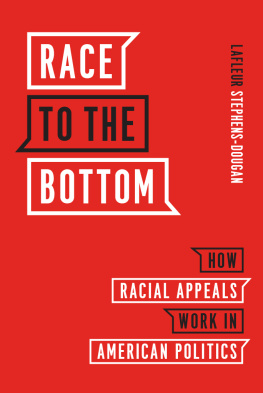

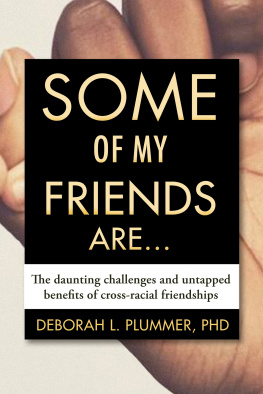
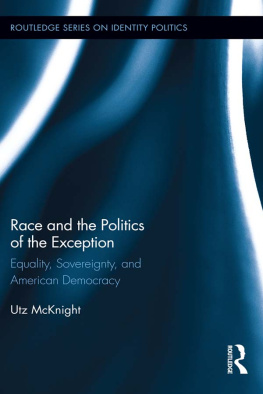
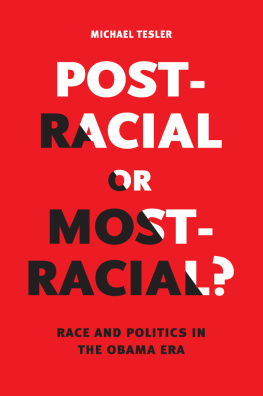
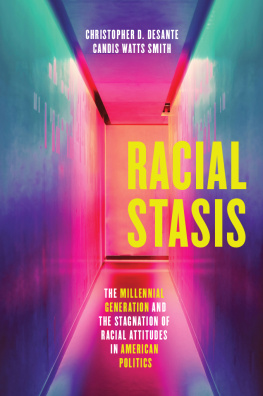
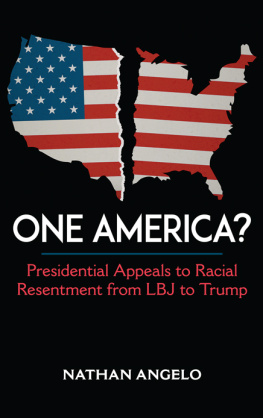
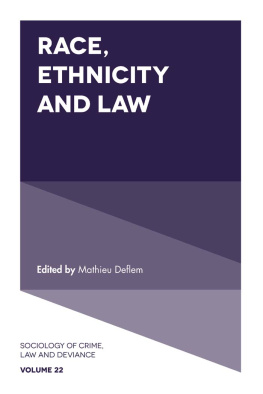
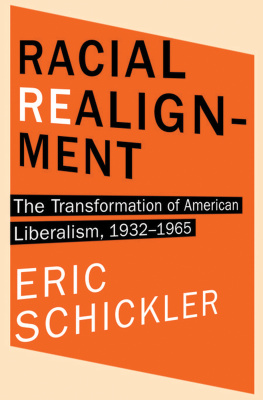

 This paper meets the requirements of ANSI/NISO Z 39.48-1992 (Permanence of Paper).
This paper meets the requirements of ANSI/NISO Z 39.48-1992 (Permanence of Paper).